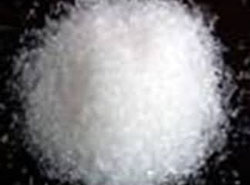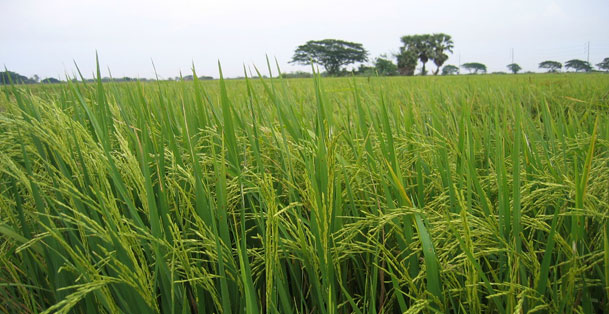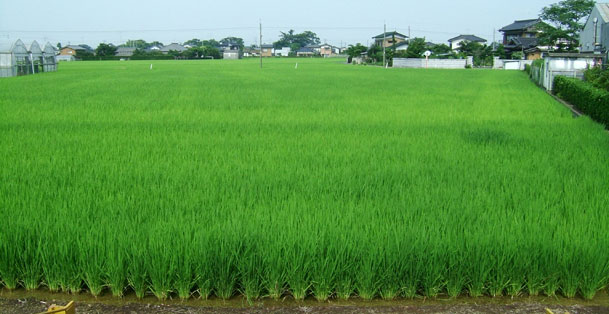
Phosphoric Acid
One Chemical, Multiple Usage
Major Uses of Phosphoric ACID
Phosphoric acid has varied uses. In manufacturing, it is a chemical intermediate or reagent in the production of numerous phosphate fertilizers, agricultural feeds, waxes, polishes, soaps, and detergents. It is added to foods as a preservative, acidifying agent, flavor enhancer, and clarifying agent. Phosphoric acid is also used in processes such as the coagulation of rubber latex, electro-polishing, soil stabilization, and as a catalyst in the production of propylene and butene polymers, ethyl benzene, and cumene. By far, largest use of phosphoric acid comes in the production of fertilizers (>75%).
Chemical reagent
Pure 75-85% aqueous solutions (the most common) are clear, colourless, odourless, non-volatile, rather viscous, syrupy liquids, but still pourable. Phosphoric acid is very commonly used as an aqueous solution of 85% phosphoric acid or H3PO4. Because it is a concentrated acid, an 85% solution can be corrosive, although not toxic when diluted. Because of the high percentage of phosphoric acid in this reagent, at least some of the orthophosphoric acid is condensed into polyphosphoric acids in a temperature-dependent equilibrium, but for the sake of labeling and simplicity, the 85% represents H3PO4 as if it were all orthophosphoric acid. Other percentages are possible too, even above 100%, where the phosphoric acids and water would be in an unspecified equilibrium, but the overall elemental mole content would be considered specified. When aqueous solutions of phosphoric acid and/or phosphate are dilute, they are in or will reach an equilibrium after a while where practically all the phosphoric/phosphate units are in the ortho- form.
Rust Removal
Phosphoric acid may be used by direct application to rusted iron, steel tools or surfaces to convert iron(III) oxide (rust) to a water soluble phosphate compound. It is usually available as a greenish liquid, suitable for dipping (acid bath), but is more generally used as a component in a gel, commonly called naval jelly. As a thick gel, it may be applied to sloping, vertical, or even overhead surfaces. Care must be taken to avoid acid burns of the skin and especially the eyes, but the residue is easily diluted with water. When sufficiently diluted it can even be nutritious to plant life, containing the essential nutrients phosphorus and iron. It is sometimes sold under other names, such as "rust remover" or "rust killer".
Processed food use
It is also used to acidify foods and beverages such as various colas, but not without controversy as to its health effects. It provides a tangy taste, and being a mass-produced chemical, is available cheaply and in large quantities. The low cost and bulk availability is unlike more expensive natural seasonings that give comparable flavors, such as ginger for tangyness, or citric acid for sourness, obtainable from lemons and limes. (However most citric acid in the food industry is not extracted from citrus fruit, but fermented by Aspergillus niger mold from scrap molasses, waste starch hydrolysates and phosphoric acid.) It is labeled as E number E338.
Medical Use
Phosphoric acid is used in dentistry and orthodontics as an etching solution, to clean and roughen the surfaces of teeth where dental appliances or fillings will be placed. Phosphoric acid is also an ingredient in over the counter anti-nausea medications which also contain high levels of sugar (glucose and fructose). It should not be used by diabetics without consultation with a doctor. Phosphoric acid is also used as a catalyst in the synthesis of aspirin because it provides a larger number of hydrogen ions with less contamination when compared to hydrochloric acid and sulfuric acid
Product Specifications
Manufacturing Process
Process Flow Chart
 Phosphoric acid is used as the electrolyte in phosphoric-acid fuel cells. It is also used as an external standard for phosphorus-31 Nuclear magnetic resonance (NMR).
Phosphoric acid is used as the electrolyte in phosphoric-acid fuel cells. It is also used as an external standard for phosphorus-31 Nuclear magnetic resonance (NMR).- Phosphoric acid is used as a cleaner by construction trades to remove mineral deposits, cementitious smears, and hard water stains. It is also used as a chelant in some household cleaners aimed at similar cleaning tasks.
- Hot phosphoric acid is used in microfabrication to etch silicon nitride (Si3N4). It is highly selective in etching Si3N4 instead of SiO2, silicon dioxide.
- Phosphoric acid is used as a flux by hobbyists (such as model railroaders) as an aid to soldering.
- Phosphoric acid is also used in hydroponics pH solutions to lower the pH of nutrient solutions. While other types of acids can be used, phosphorus is a nutrient used by plants, especially during flowering, making phosphoric acid particularly desirable. General Hydroponics pH Down liquid solution contains phosphoric acid in addition to citric acid and ammonium bisulfate with buffers to maintain a stable pH in the nutrient reservoir.
- Phosphoric acid is used as a pH adjuster in cosmetics and skin-care products.
- Phosphoric acid is used as a chemical oxidizing agent for activated carbon production.
- Phosphoric acid is also used for High Performance Liquid Chromatography.
- Phosphoric acid can be used as an additive to stabilize acidic aqueous solutions within a wanted and specified pH range
- Phosphoric acid is the key ingredient that gives the biter taste in widely consumed Coca-Cola and Pepsi sodas.
Major Uses of Phosphoric ACID
Phosphoric acid has varied uses. In manufacturing, it is a chemical intermediate or reagent in the production of numerous phosphate fertilizers, agricultural feeds, waxes, polishes, soaps, and detergents. It is added to foods as a preservative, acidifying agent, flavor enhancer, and clarifying agent. Phosphoric acid is also used in processes such as the coagulation of rubber latex, electro-polishing, soil stabilization, and as a catalyst in the production of propylene and butene polymers, ethyl benzene, and cumene. By far, largest use of phosphoric acid comes in the production of fertilizers (>75%).
Chemical reagent
Pure 75-85% aqueous solutions (the most common) are clear, colourless, odourless, non-volatile, rather viscous, syrupy liquids, but still pourable. Phosphoric acid is very commonly used as an aqueous solution of 85% phosphoric acid or H3PO4. Because it is a concentrated acid, an 85% solution can be corrosive, although not toxic when diluted. Because of the high percentage of phosphoric acid in this reagent, at least some of the orthophosphoric acid is condensed into polyphosphoric acids in a temperature-dependent equilibrium, but for the sake of labeling and simplicity, the 85% represents H3PO4 as if it were all orthophosphoric acid. Other percentages are possible too, even above 100%, where the phosphoric acids and water would be in an unspecified equilibrium, but the overall elemental mole content would be considered specified. When aqueous solutions of phosphoric acid and/or phosphate are dilute, they are in or will reach an equilibrium after a while where practically all the phosphoric/phosphate units are in the ortho- form.
Rust Removal
Phosphoric acid may be used by direct application to rusted iron, steel tools or surfaces to convert iron(III) oxide (rust) to a water soluble phosphate compound. It is usually available as a greenish liquid, suitable for dipping (acid bath), but is more generally used as a component in a gel, commonly called naval jelly. As a thick gel, it may be applied to sloping, vertical, or even overhead surfaces. Care must be taken to avoid acid burns of the skin and especially the eyes, but the residue is easily diluted with water. When sufficiently diluted it can even be nutritious to plant life, containing the essential nutrients phosphorus and iron. It is sometimes sold under other names, such as "rust remover" or "rust killer".
Processed food use
It is also used to acidify foods and beverages such as various colas, but not without controversy as to its health effects. It provides a tangy taste, and being a mass-produced chemical, is available cheaply and in large quantities. The low cost and bulk availability is unlike more expensive natural seasonings that give comparable flavors, such as ginger for tangyness, or citric acid for sourness, obtainable from lemons and limes. (However most citric acid in the food industry is not extracted from citrus fruit, but fermented by Aspergillus niger mold from scrap molasses, waste starch hydrolysates and phosphoric acid.) It is labeled as E number E338.
Medical Use
Phosphoric acid is used in dentistry and orthodontics as an etching solution, to clean and roughen the surfaces of teeth where dental appliances or fillings will be placed. Phosphoric acid is also an ingredient in over the counter anti-nausea medications which also contain high levels of sugar (glucose and fructose). It should not be used by diabetics without consultation with a doctor. Phosphoric acid is also used as a catalyst in the synthesis of aspirin because it provides a larger number of hydrogen ions with less contamination when compared to hydrochloric acid and sulfuric acid
Product Specifications
| Description | Uses |
| Merchant Grade | Fertilizer, chemical reagent, medical, Rust removal, processed food |
Manufacturing Process
Process Flow Chart







